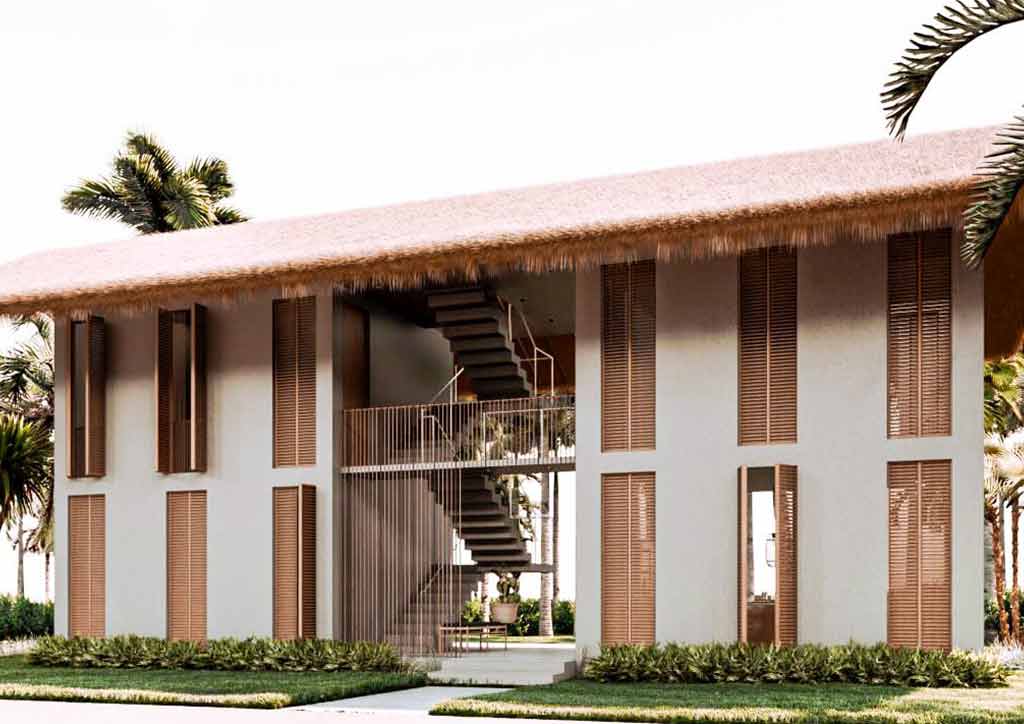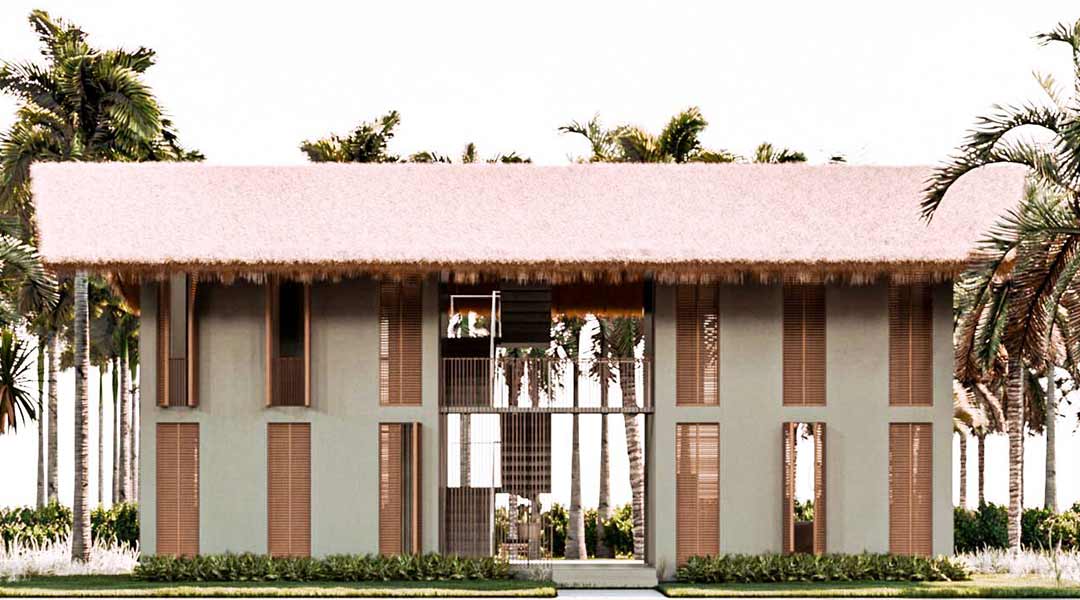Despite being a common weed, the humble cogon makes for a great roof.
Andi Eigenmann’s modern Siargao home was an instant buzz topic for highlighting Filipino craftsmanship. Designed by architect Vanessa Gaston and designers Rand Regis and Joanne Ycong, the two-story house was mistakenly thought to use cogon as its roofing material. After a few words with its architect Vanessa Gaston, we now know that the material used was actually nipa. Regardless of the material, it piqued our interest and led to a short conversation about the pros and cons of cogon as an architectural material.
READ MORE: Volcanic Ash in Structures: Then and Now

Photo courtesy of Vanessa Gaston Designs
Despite its reputation as a pesky weed and a highly flammable material, cogon has its own quirks. Cogon is ideal for coastal and island houses. This is clearly pointed out in Andi’s house and in older, traditional houses like the Ivatan homes in Batanes. If paired with a structural design that has gaps to let the home expel hot air, materials like cogon can make the interior a lot cooler. Aside from making summers less sticky and warm, cogon also lasts three times longer (eight to ten years, if properly installed) than nipa which can only last a good two to five years. According to architect Vanessa, it also makes for a great aesthetic piece.
READ MORE: Design in The Time of Covid

“Cogon is my favorite aesthetically because the bunches of long straws of grass give more visual weight to the structure. It’s versatile, silly enough like hair–which you can cut straight or hang more organically,” shares architect Vanessa.
Take note though, cogon is a favorite nesting place for birds. If not properly set, the roof can get slowly chipped away by these aviaries. That and if people aren’t careful, it can become quite a fire hazard. Because of this, designs using cogon can be met with restrictions for urban settings. Despite these challenges, the use of local materials like cogon open up a conversation about reintroducing thatch roofs to urban spaces in the Philippines.
In Gaston’s point of view, “I do believe that there is a lot of space in the urban residential space for thatching to be reintroduced (along with other natural materials like bamboo), for as long as it allows for the space and fire safety it requires. We still have very Western habits in building and material selection as compared to our Southeast Asian counterparts who have the same access to natural resources we have. I think that the Philippines can return to the same openness and affinity to local materials.”
READ MORE: JVISLES.ARCHITECT Designs a New Modern Rustic Home with A Touch of Nature

The use of cogon is also a great reminder that regardless of the available materials, a great design can still spring from a combination of simple materials. Provided that one remembers how versatile modern design can be despite being a challenging style to work with.
READ MORE: Let These Renowned Experts Help in Creating the Right Home for You



